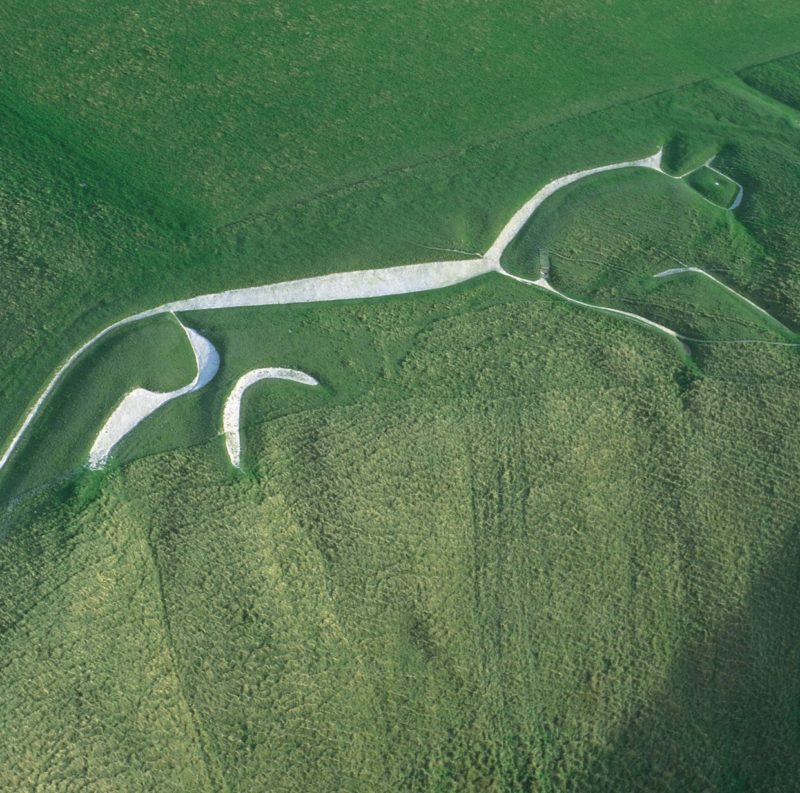There are eight huge white horse hill figures in the North Wessex Downs carved into the chalk downland but the prehistoric Uffington White Horse is the best-known.
Located high up on the Lambourn Downs, the Uffington horse was probably carved around 1000 BC in the late Bronze Age making it the oldest surviving hill figure in Britain. It is part of the unique complex of ancient remains and landscape features that are found at White Horse Hill and beyond, spreading out across the high chalk downland.
The Manger, a dramatic dry valley has steep rippled sides left from the retreating permafrost during the last Ice Age. To the east of the Manger lies Dragon Hill, a small roundish hill with a flattened top said to be the site where St. George, England’s patron saint, slew the dragon. Crowning White Horse Hill is an Iron Age hillfort known as Uffington Castle. A simple design of one rampart and ditch, the castle at 262m above sea level forms the highest point in Oxfordshire, with views for miles around over six counties. Neolithic burial mounds dot the landscape.
In the spring and summer the chalk downland is alive with butterflies and other pollinating insects drawn to the wild flowers and skylarks fill the air with song.
You can take a fairly easy walk, of less than a mile, to the White Horse from the National Trust car park or extend it to take in one of the many circular routes in the area. See the location of all the white horses of the North Wessex Downs by going to our interactive map here.
Further Information
Visit the National Trust website for more information about Uffington White Horse
What3Words: pounces.cautious.boomer
Grid Reference: SU301865


